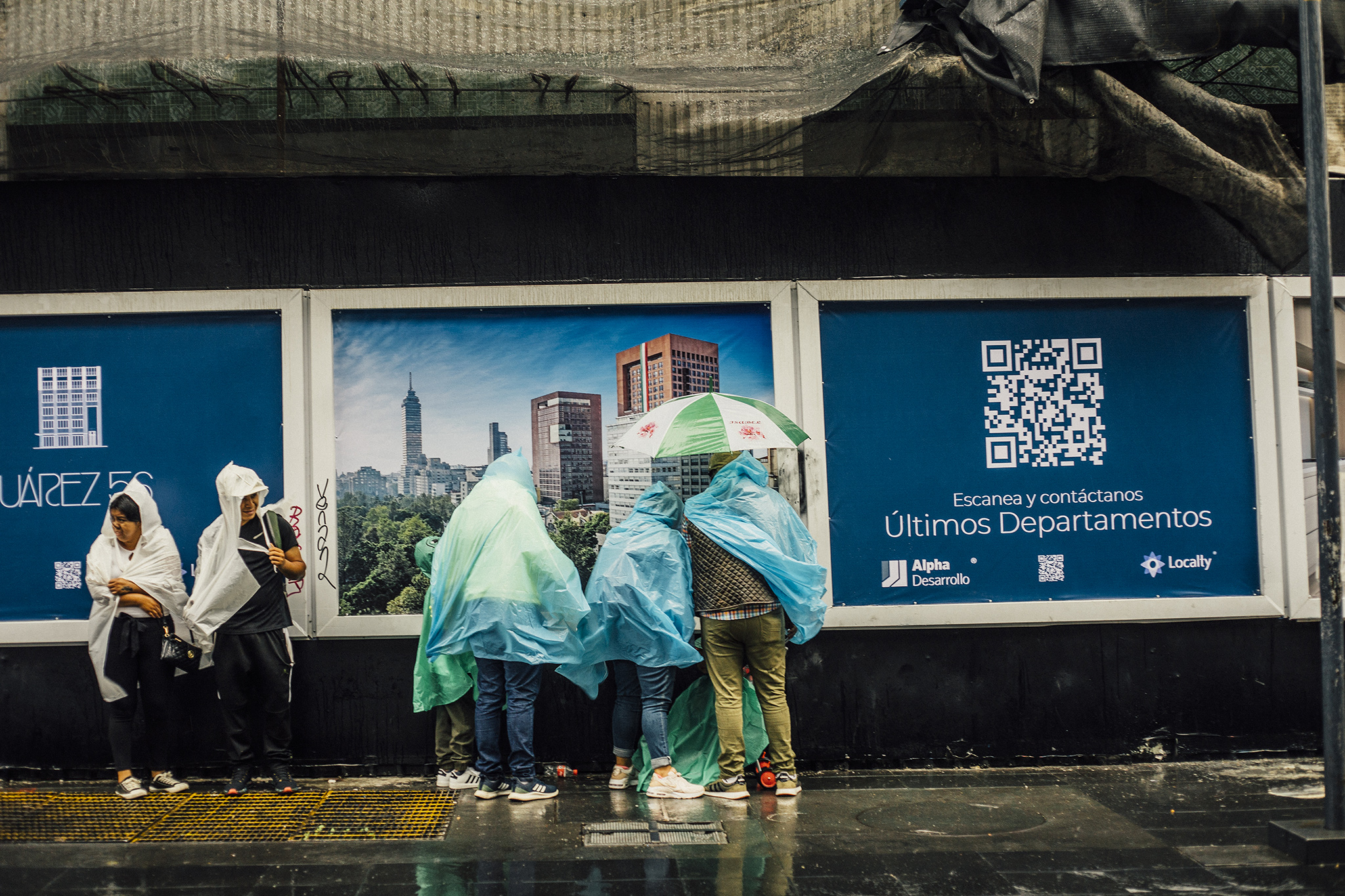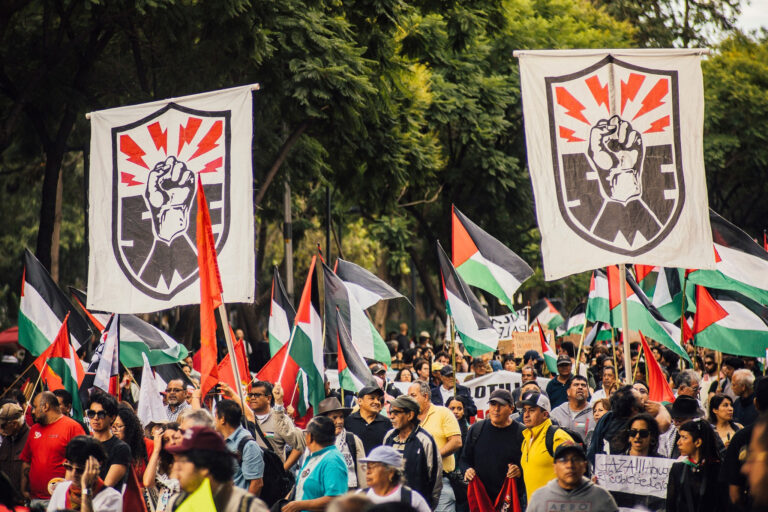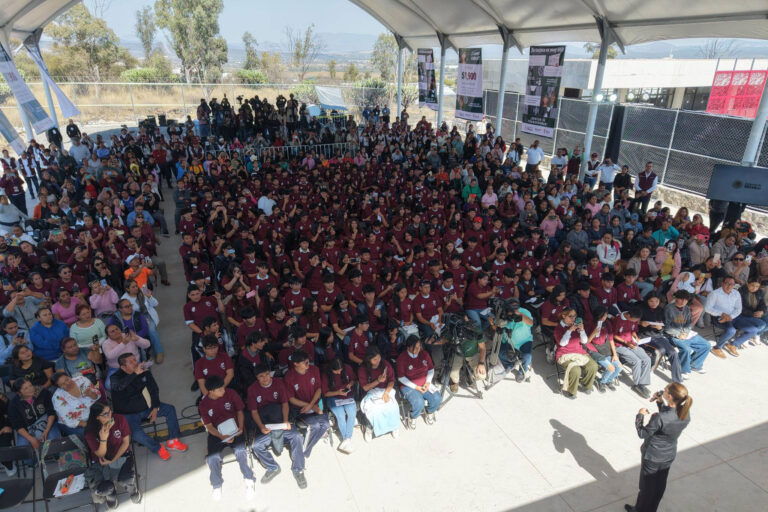This House is not a Hotel
This article by Arlin Medrano appeared in the July 8, 2025 edition of SPR Informa.
[Editor’s note: in October 2024, then temporary Head of Government of Mexico City, Martí Batres of Morena, tabled and had the City Congress approve very strong legislation against Airbnb and other gentrifying platforms. This legislation appears to have disappeared, with now Head of Government Clara Brugada, who arose from housing struggles in the capital, showing more concern for the integrity of some windows in Condensa and ensuring a smooth World Cup than the housing crisis.]
This Friday, the “anti-gentrification” demonstration in Mexico City was the tip of the iceberg of a problem with many causes, a monster with many heads.
The new mechanisms of colonization today don’t always manifest themselves through massacres or genocide. They also manifest themselves when the corner grocery store is replaced by a multinational corporation, when the street stall is demolished to make way for an “aesthetic” cafe that goes viral on Instagram, or when an elderly couple is forced to move to the outskirts because a real estate developer has built a minimalist building where the monthly rent is quoted in dollars. Little by little, prices in the area skyrocket, and what was once a territory of urban resistance becomes a showcase for tourism and, ultimately, a territory of expulsion.
In Mexico, this process is advancing rapidly. We see it in Mexico City, but it’s not an isolated case; it exists in every metropolitan area of the country and on beaches across the map, where the culture that was the result of colonialist resistance has been transformed into a commodity; where access to land, housing, and even public space is determined by the logic of the market. The result? A segmented, deeply unequal city, with homeless youth, displaced Indigenous peoples, and locals expelled from the center to the periphery.
Article 4 of the Constitution establishes that “every family has the right to enjoy decent and dignified housing.” However, this right remains at the declarative level; as long as there is no regulatory framework for urban land prices, no control over the rental market, or no restrictions on residential use as a speculative investment, as is the case in cities like Berlin and Barcelona. This omission has allowed the proliferation of short-term rental platforms like Airbnb, without the necessary regulations, which have taken thousands of homes off the market.
But gentrification isn’t just promoted by omission. It also connects with other structural forms of violence, driven by classism and racism. Racialized people, whether from working-class backgrounds or peripheral neighborhoods, are systematically discriminated against in rental processes, where their “profile”—white, foreign, and wealthy—is prioritized over community affiliation or territorial roots.

This phenomenon has worsened with the massive arrival of digital nomads, particularly Americans and Europeans, who—without social, linguistic, or political ties to the city—gain access to central areas by paying rent in dollars, thus displacing locals, who, even with two jobs, cannot compete with the exchange rate. As Mike Davis (2006) points out, neoliberal urbanism creates megacities where the center is for capital and the peripheries for survival.
This could have a direct impact on young people, because while the right to housing seems like a distant dream and not a feasible life plan, price inflation creates an even wider gap. INEGI (2017) documented that 7 out of 10 people between the ages of 25 and 34 continue to live with their families, not because of emotional choice but because of economic impossibility. This is related to the inability to start a family.
Without access to housing, transportation where more time is spent commuting than at home, or jobs with rights, housing independence is impossible. For young people, starting a family is no longer an option: without a home or stable future, the city expels us while selling us to the highest bidder.
Here appears another head of the monster: internal gentrification. Those expelled from central areas end up moving to working-class neighborhoods, where their arrival, although forced by the system, reproduces the logic of social and cultural substitution. Prices, aesthetics, and uses of space change. The neighborhood changes. And then, those who historically lived there begin to feel alienated, uncomfortable, invisible. The gentrification of gentrification, which ends in cultural erasure.
This conflict is deeply political and cannot be addressed with individual solutions. It’s not a question of “don’t move,” “buy local,” or saying “gringo out” in the abstract. It’s about building a comprehensive city policy where the right to live prevails over the logic of accumulation. One example is President Claudia Sheinbaum’s six-year housing project, which seeks to build 1 million homes by 2030; however, it is not enough without support from the other two branches of government, where legislation and rulings favor decent housing.
But this policy will not come from the mayoral offices—particularly in areas like Cuauhtémoc, Benito Juárez, and Miguel Hidalgo—because they have been complicit and instrumental in this pattern of dispossession, as they are part of the groups that have generated a latent problem like the “real estate cartel.” They grant permits, relax land-use regulations, encourage the hoarding of resources—like water—criminalize informal commerce, and repress neighborhood organizing with rhetoric about “order and security.” Governments that prefer to respond to capital rather than to those they represent.
While people organize to resist, the media focuses on broken glass rather than illegal evictions. They call protesters “vandals,” not those hoarding homes. Social protests are always portrayed from the same angle: the person who reports the problem is blamed, not the person who causes it. Thus, structural violence is normalized and anger is criminalized, in an attempt to delegitimize a legitimate and latent struggle.
So, what can we do about this many-headed monster? The first thing is to name it. To lay it bare. To expose that gentrification is not an inevitable consequence of urban development, but a class strategy, a politics of exclusion, a sophisticated expression of dispossession. The second is to build a common agenda: a city cannot be conceived without its inhabitants. It cannot continue to be governed by the market. And the third is to act: from neighborhood and community movements, from organized youth. Because the city is not just a place to live: it is a right that we must collectively fight for.
In the face of this many-headed monster, we need heads that dream and hands that resist. We didn’t come into the world to survive dispossession, but to reclaim what belongs to us: the right to stay and say: This house is not a hotel, we are a community that resists.
-
The Poor as Instruments, Not Allies
Welfare programs with political aims are not the same as forging political alliances with the impoverished population created by voracious neoliberal capitalism.
-
Florida, the Race for the Presidency & Opaque Capital
Contemporary Florida is the distorted and advanced mirror of a new form of global governance, where money laundering has not only been tolerated, but institutionalized & updated for the digital age, fed by a murky river flowing from the Global South.
-
People’s Mañanera December 22
President Sheinbaum’s daily press conference, with comments on economic achievements, Sonora development plan, extortion of immigrants, Baja California Sur dam, water treaty with US, nepotism loopholes, and García Luna.




